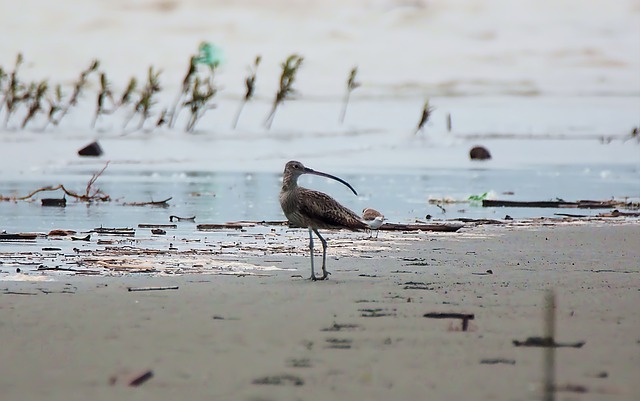How to Become a Wildlife Rehabilitator
There are other professions besides veterinarians that allow you to help sick and injured animals. An alternative profession is a wildlife rehabilitator. Both veterinarians and wildlife rehabilitators do, in fact, help sick and animal animals. Maybe an animal has a broken bone, or perhaps it’s suffering from a disease. Regardless, people who work in either of these professionals can provide assistance so that the animal recovers.
What Is a Wildlife Rehabilitator?
A wildlife rehabilitator is a worker who provides treatment and rehabilitation for sick, injured and orphaned wild animals. Wild animals, of course, aren’t pets. This is one of the ways that wildlife rehabilitators differ from veterinarians. While veterinarians typically provide services exclusively for pets and other domestic animals, wildlife rehabilitators provide services exclusively for wild animals. Their goal is to help wild animals get on their feet so that they can be released back into the wild.
Responsibilities and Duties of a Wildlife Rehabilitator
What are the responsibilities and duties of a wildlife rehabilitator exactly? As previously mentioned, they treat and rehabilitate sick, injured and orphaned wild animals. When a wild animal is sick, injured or orphaned, it may not be able to able to take care of itself. This is where wildlife rehabilitators come into play. Wildlife rehabilitators are responsible for treating and rehabilitating these wild animals. After performing the necessary services, they’ll release the animals back into the wild.
Wildlife rehabilitators must provide general care services for wild animals. Among other things, they must ensure that all wild animals under their care have access to water and food. They must also maintain the facilities where the wild animals are housed. Wildlife rehabilitators don’t house wild animals permanently. Rather, they only house them in approved facilities until they’ve recovered, after which the wild animals are released back into the wild.
It’s important to note that wildlife rehabilitators don’t perform veterinary services. If an animal under their care needs medical treatment, they’ll seek it from a licensed veterinarian. Wildlife rehabilitators work in conjunction with licensed veterinarians, as well as other veterinary professionals, to help wild animals recover from their respective injuries or illnesses.

Education Requirements to Become a Wildlife Rehabilitator
While you don’t need a Doctorate of Veterinary Medicine (DVM), there are still education requirements you must satisfy to become a wildlife rehabilitator. Depending on the state in which you live, you may have to earn a bachelor’s or associate’s degree. Some states require wildlife rehabilitators to have a degree in animal science, whereas others require them to have a degree in zoology or biology.
Wildlife rehabilitators are regulated in most states by the state’s wildlife department. Different states have different wildlife departments. Arkansas, for example, has the Arkansas Game and Fish Commission, whereas Alabama has the Alabama Department of Conservation and Natural Resources. To become a wildlife rehabilitator, you’ll need to satisfy the requirements by your state’s wildlife department. Each state’s wildlife department has its own requirements, with some of them requiring a degree in one of the aforementioned fields of study.
Training Requirements to Become a Wildlife Rehabilitator
You may discover that some state wildlife departments require training to become a wildlife rehabilitator. The Connecticut Department of Energy and Environmental Protection, for example, requires 40 hours of hands-on training with a licensed wildlife rehabilitator. In other words, you’ll have to train with a licensed wildlife rehabilitator for 40 hours before you can become a wildlife rehabilitator in Connecticut. Other state wildlife departments require even more training. In Delaware, you’ll have to complete a minimum of 100 hours of training to become a wildlife rehabilitator.
Like with most licensed professions, you’ll typically have to pass an exam to become a wildlife rehabilitator. The exam is designed to test your knowledge of wildlife rehabilitation. In most states, a passing score of 80% or higher is required. You can always retake the exam if you fail it, though some states require you to wait a specific length of time while also paying an additional fee.
Tips for Success When Seeking Employment as a Wildlife Rehabilitator
When pursuing a career as a wildlife rehabilitator, there are a few tips you should follow to increase your chances of success. For starters, make sure you satisfy all of the requirements by your state’s wildlife department. You may have to earn a degree, and you may have to train for a minimum number of hours.
You can search for employment as a wildlife rehabilitator on the internet. Using the internet is faster and more convenient than traditional methods of job-searching, such as in-person visiting or calling wildlife rehabilitation centers.
Even if it’s not required, performing volunteer work can help you land a job as a wildlife rehabilitator. By volunteering, you’ll have additional hands-on training that make you a more attractive candidate to employers.

